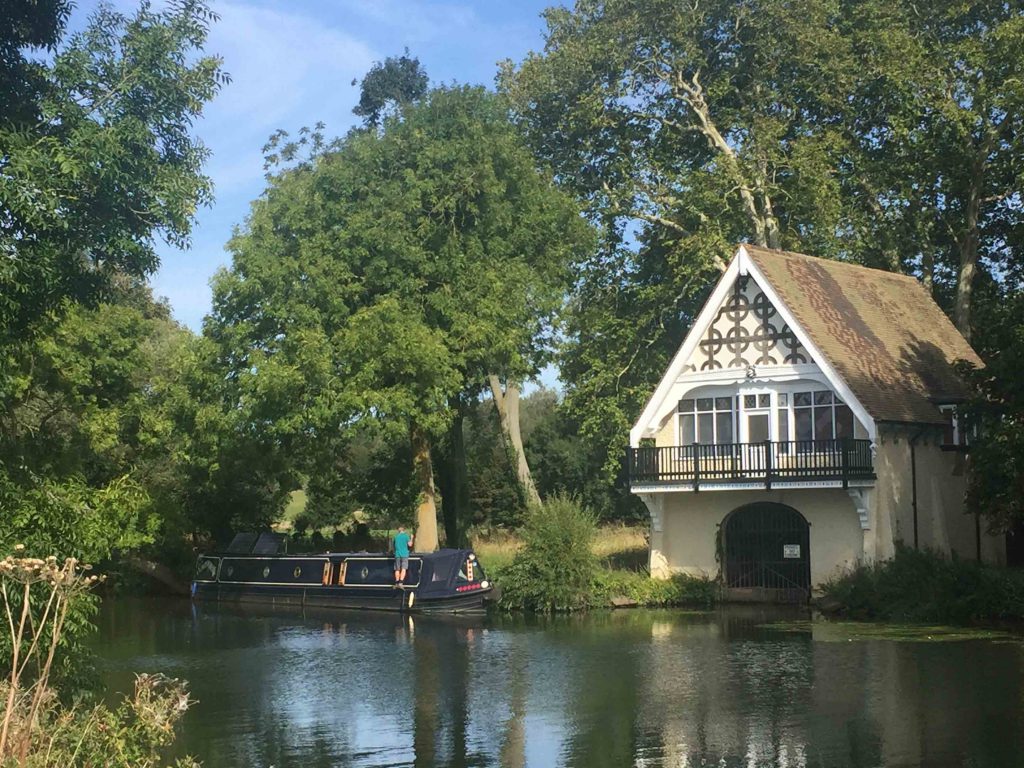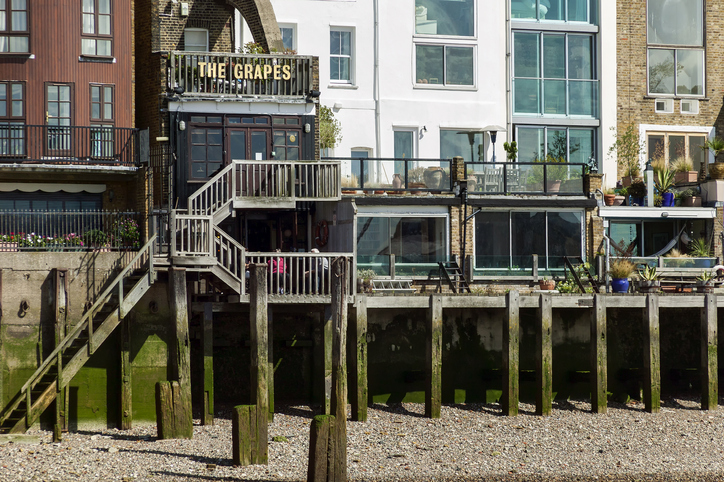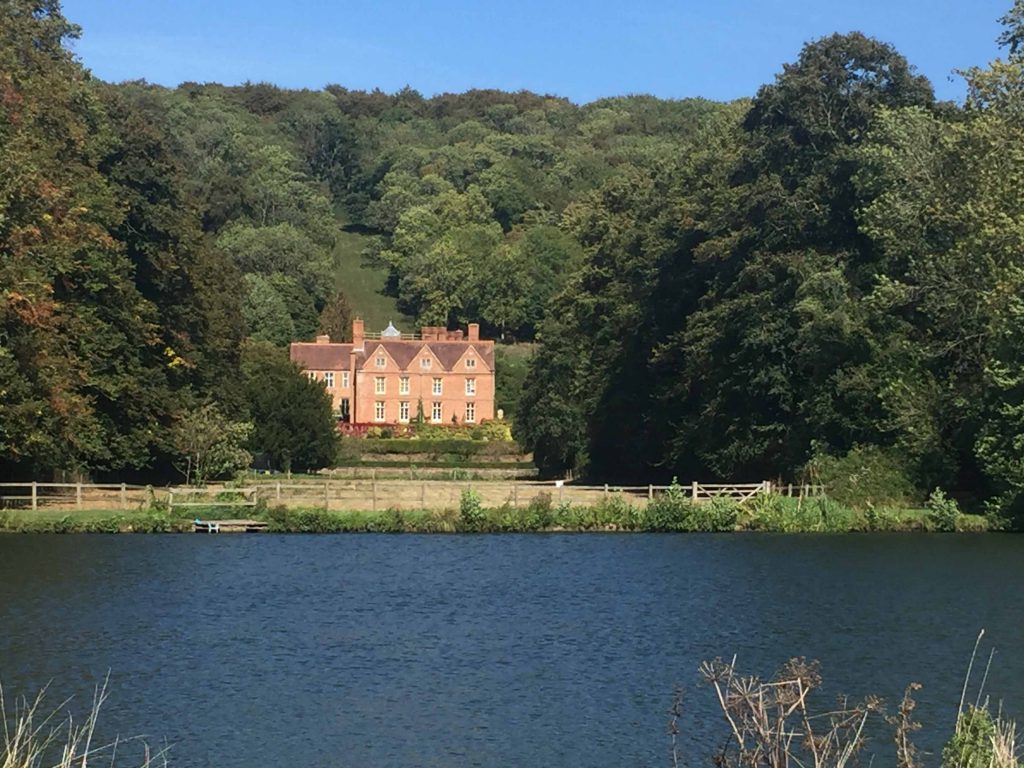When walking the Thames Path it’s good to have a couple of books in your rucksac other than a guidebook. Here we explore the best novels to read when walking the Thames Path.
Published in 1889 this short novel tells the story of the author and his two friends, George and Harris, plus his dog, Montmorency, as they row or tow their boat from Kingston all the way to Oxford.
The author uses the book not just to narrate the journey but also to recall anecdotes from his life. Interestingly although the book is fiction, the author and his wife did take a boat up the Thames for their honeymoon.
What Thames Path walkers will find interesting are the number of hostelries that are still open (or at least were before Covid-19!): the Manor Hotel, Datchet; the Swan Inn at Pangbourne; the Bull at Streatley; the Barley Mow at Clifton Hampden.
They reached Oxford and had just started to head back when they were forced to abandon their journey on account of the weather. A feeling many walkers will no doubt be able to relate to.
It’s a fun, short read although inclined to go off at a tangent from time to time. But walkers will definitely recognise many of the scenes and the book will no doubt bring back happy memories. Of course, being on the water they had the chance to visit either bank and so the reader is sometimes left feeling rather jealous of the author’s ability to explore nooks and crannies that a walker cannot reach.

One of the greatest books of all time, Great Expectations opens in dramatic fashion in a graveyard on the Thames marshes, flat-lands between the River Medway and the Thames Estuary. Dickens grew up in Chatham, on the River Medway, a tributary of the Thames and later settled in Rochester, also on the Medway.
The Thames Path terminates some 25 miles earlier and therefore Thames Path walkers must use their imagination to picture the opening scenes: or read the book. “Ours was the marsh country, down by the river, within, as the river wound, twenty miles of the sea. The dark flat wilderness beyond the churchyard. intersected with dykes and mounds and gates, was the marshes; and the low leaden line beyond was the river; and the distant savage lair from which the wind was rushing, was the sea.”
Later in the book, they plot the flight of Abel Magwitch, rowing from Temple in central London, past London Bridge, Traitors Gate and, presumably (although not mentioned) past Greenwich until they reached Gravesend, some 17 miles beyond the end of the Thames Path, where they would wait for a ship.
As they rowed, they would have passed the Grapes on their left, someway between Tower Bridge and Greenwich. This pub was visited by Dickens and is described in the opening chapter of Our Mutual Friend: “A tavern of dropsical appearance… long settled down into a state of hale infirmity. It had outlasted many a sprucer public house, indeed the whole house impended over the water but seemed to have got into the condition of a faint-hearted diver, who has paused so long on the brink that he will never go in at all.” The inn is now owned by actor Sir Ian McKellen.

This children’s classic, loved equally by adults, does not mention the Thames. However, Grahame was raised in Cookham Dean, which sits above the Thames between Marlow and Maidenhead, and it is believed this was the inspiration for his writing. And there can be no doubt from his descriptions that he is writing about the Thames.
“On either side of them, as they glided onwards, the rich meadow-grass seemed that morning of a freshness and a greenness unsurpassable. Never had they noticed the roses so vivid, the willow-herb so riotous, the meadow-sweet so odorous and pervading. Then the murmur of the approaching weir began to hold the air…”
Grahame took early retirement from his post as Secretary to the Bank of England in 1908 and Wind in the Willows was published in that same year. The story revolves around four main animals: Rat (a water vole), Mole, Badger and Toad. Toad, who lives in Toad Hall, is frequently in trouble on account of his obsession with motor cars.
Three properties make their claim to Toad Hall all of which can be seen from the Thames Path: Mapledurham House and Hardwick House, both between Pangbourne and Purley; and Fawley Court near Henley. E H Shephard’s illustrations closely resemble Mapledurham House. But Grahame, who lived in Pangbourne (although he moved to Pangbourne some years after the book was published), was also a frequent visitor to Hardwick House and befriended Sir Charles Day Rose, proprietor of Hardwick House, and somewhat of a buccaneer who rode, sailed and flew. Some believe he is the inspiration for Toad.

Ready to book?
| Cookie | Duration | Description |
|---|---|---|
| cookielawinfo-checkbox-analytics | 11 months | This cookie is set by GDPR Cookie Consent plugin. The cookie is used to store the user consent for the cookies in the category "Analytics". |
| cookielawinfo-checkbox-functional | 11 months | The cookie is set by GDPR cookie consent to record the user consent for the cookies in the category "Functional". |
| cookielawinfo-checkbox-necessary | 11 months | This cookie is set by GDPR Cookie Consent plugin. The cookies is used to store the user consent for the cookies in the category "Necessary". |
| cookielawinfo-checkbox-others | 11 months | This cookie is set by GDPR Cookie Consent plugin. The cookie is used to store the user consent for the cookies in the category "Other. |
| cookielawinfo-checkbox-performance | 11 months | This cookie is set by GDPR Cookie Consent plugin. The cookie is used to store the user consent for the cookies in the category "Performance". |
| viewed_cookie_policy | 11 months | The cookie is set by the GDPR Cookie Consent plugin and is used to store whether or not user has consented to the use of cookies. It does not store any personal data. |